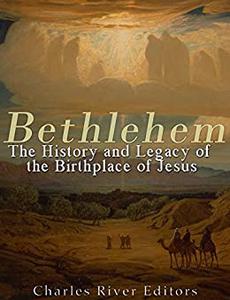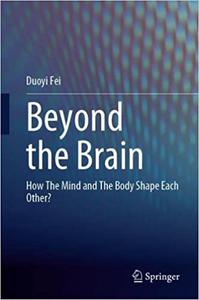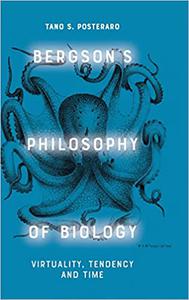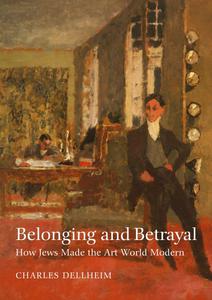 Bethlehem: The History and Legacy of the Birthplace of Jesus by Charles River Editors
Bethlehem: The History and Legacy of the Birthplace of Jesus by Charles River EditorsEnglish | October 17, 2017 | ISBN: 1978289820 | 94 pages | EPUB | 2.28 Mb
*Includes pictures *Includes accounts of the Nativity and Bethlehem's holy sites *Includes online resources and a bibliography for further reading "But as for you, Bethlehem Ephrathah, Too little to be among the clans of Judah, From you One will go forth for Me to be ruler in Israel His goings forth are from long ago, From the days of eternity." - The Book of Micah, Chapter 5 Bethlehem is amongst the oldest cities in the world, one that has been conquered and ruled by Caananites, Jews, Romans, Arabs, Crusaders, the Mamluks of Egypt, and the Ottomans. In the last century alone, it has been controlled by various different parties. The British took Bethlehem during World War I and controlled the city from 1920-1948, and in the wake of the 1948 war between Israel and its neighbors, Jordan annexed Bethlehem and controlled it until the Six Day War in 1967. It was during the Six Day War that Israel took control of Bethlehem, remaining in power over the city until 1995, when, in compliance with the Oslo Peace Accords, control of the city and of the surrounding West Bank was handed over to the Palestinian National Authority. The Palestinians continue to administer affairs in Bethlehem to the present day. What was it that caused this one small, unassuming settlement to be the focus of so much attention and strife? The primary reason that Bethlehem is so famous today is the Biblical passages that relate the town as the birthplace of Jesus Christ. Moreover, the oldest continuously used Christian church in the world is the Church of the Nativity in Bethlehem. Like the town itself, the Church of the Nativity has gone through numerous cycles of creation and ruin. First built above the Cave of the Nativity by Emperor Constantine's mother, Helena, in May 339, the church existed for almost two centuries before it was destroyed during the Samarian revolt in 529 CE. The church was later reconstructed by the Byzantine emperor Justinian in 565, and it is this structure that has largely survived to the present day. Today, the Church of the Nativity is a UNESCO World Heritage Site, alongside the pilgrimage route that led between Bethlehem and Jerusalem. The church and its surrounding complex of convents, monasteries, and chapels are fortress-like in appearance, reflecting the turbulent history of not only Bethlehem but the religious communities connected to the site. It was a focal point in the conflicts of the Crusades, and like many other towns in the Holy Land it fell into decline after the European armies were forced from the Holy Land. Despite being under Arab rule, Greek and Syrian Christian communities have continued to live and operate in the site, which was respected by both the Christian and Islamic faiths. It was also an important site for Judaism, being the location where many events of the Old Testament took place. Bethlehem is the burial place of Rachel, wife of Jacob, and it is where the story of Ruth and her mother-in-law Naomi took place. It was also known as the city of David because it was the place where King David was anointed by Samuel. Needless to say, all of its history and religious import make it one of the most important places on the planet. Bethlehem: The History and Legacy of the Birthplace of Jesus looks at the history of the city and its importance in antiquity. Along with pictures depicting important people, places, and events, you will learn about Bethlehem like never before.



![S.T.A.L.K.E.R. 2 / STALKER 2: Heart of Chornobyl - Ultimate Edition (2024) [+UPDATE 23.12.2024 - v1.1.3] ElAmigos / Polska wersja językowa](https://i.postimg.cc/Zqd8RWGY/UZG8PBE.jpg)



















































![David Gilmour - Luck and Strange (2024) [FLAC]](https://i.imgur.com/everaBc.jpeg)
![Męskie Granie Orkiestra - Męskie Granie 2024 (2024) [FLAC]](https://i.imgur.com/FAyOxrM.jpeg)
![The Rolling Stones - Hackney Diamonds (2023) [FLAC]](https://i.imgur.com/wCkyyUN.jpg)
![Lady Gaga - Harlequin (2024) [FLAC]](https://i.imgur.com/dcgIA8D.jpeg)
![Natalia Kukulska - Dobrostan (2024) [FLAC]](https://i.imgur.com/bdljG3O.jpeg)
![Kaśka Sochacka - Ta druga (2024) [FLAC]](https://i.imgur.com/hORQKvn.jpeg)
![Kuba Sienkiewicz - Pani Bóg (2024) [FLAC]](https://i.imgur.com/qijCx8Z.jpeg)
![Lanberry - Heca (2024) [FLAC]](https://i.imgur.com/8P7QfeR.jpeg)
![Sara James - PLAYHOUSE (2024) [FLAC]](https://i.imgur.com/m4f8OKg.jpeg)
![Grzegorz Hyży - EPILOG (2024) [FLAC]](https://i.imgur.com/8DA2sBr.jpeg)
![Myslovitz - WIECZORAMI CHŁOPCY WYCHODZĄ NA ULICE (2024) [FLAC]](https://i.imgur.com/l9mMtIG.jpeg)
![Krzysztof Zalewski - ZGŁOWY (2024) [FLAC]](https://i.imgur.com/vh48RAc.jpeg)
![Krzysztof Cugowski - Wiek to tylko liczba (2024) [FLAC]](https://i.imgur.com/SBzgqe2.jpeg)
![Nosowska - Kasia i Błażej (2024) [FLAC]](https://i.imgur.com/mObvVXQ.jpeg)
![sanah - Pianinkowe Kaprysy (2024) [FLAC]](https://i.imgur.com/pVjjPAa.jpeg)
![Kwiat Jabłoni - Pokaz slajdów (2023) [FLAC]](https://i.imgur.com/diERHfZ.jpg)
![Robert Cichy - Spacer po Warszawie (2024) [FLAC]](https://i.imgur.com/ixleU9o.jpeg)
![Viki Gabor - Terminal 3 (2024) [FLAC]](https://i.imgur.com/Q1KCnDs.jpeg)
![Sanah - Kaprysy (2024) [FLAC]](https://i.imgur.com/71OZm4h.jpeg)
![Męskie Granie Orkiestra - Męskie Granie 2023 (2023) [FLAC]](https://i.imgur.com/U4YHo8d.jpg)




